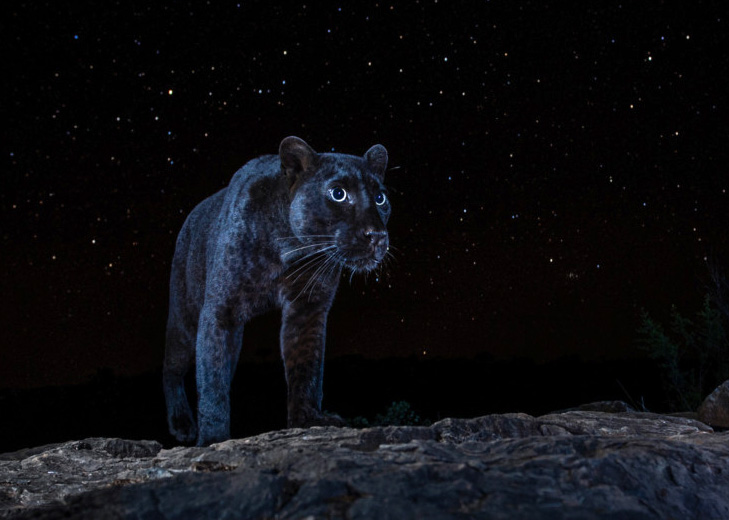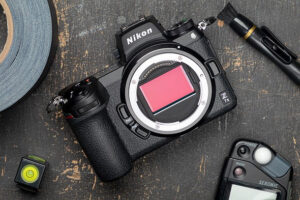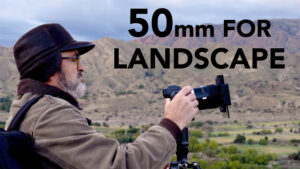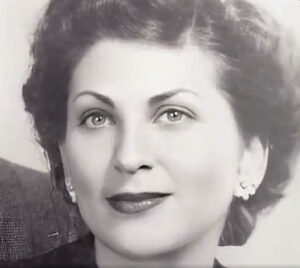Welcome again to HDR News. Artificial Intelligence is all around us but often unseen. It is affecting photography in ways we could only hope for in the past like sharpening previously un-usable images. In this issue we look at two more photographic areas where it’s employed that will get your attention. We also look at the making of a truly amazing photograph of a black panther shot at night with the stars twinkling. And, for the gear head in us we look at Sony’s flagship a1 camera and a complete review of Nikon’s replacement for the Z7, the Z7 II. Let’s get going!
Adobe’s Amazing Upscale Technology – Revive Your Lower Res Images
 Those of us who went digital in the early days of digital cameras have a ton of 12MP and even lower resolution images archived away. We haven’t done much with them lately because upsizing them is almost always a disappointing exercise. The same goes for those interesting but low-res images that come out of mobile phones. There’s just not enough data to work with, until now. The engineers at Adobe have harnessed A.I. learning to create technology that analyzes each of an image file’s pixels and their surrounding pixels to create new data that can take a 12MP file and pump it up to 40MP, without a substantial loss of sharpness. The future is here now.</p>
Those of us who went digital in the early days of digital cameras have a ton of 12MP and even lower resolution images archived away. We haven’t done much with them lately because upsizing them is almost always a disappointing exercise. The same goes for those interesting but low-res images that come out of mobile phones. There’s just not enough data to work with, until now. The engineers at Adobe have harnessed A.I. learning to create technology that analyzes each of an image file’s pixels and their surrounding pixels to create new data that can take a 12MP file and pump it up to 40MP, without a substantial loss of sharpness. The future is here now.</p>
Learn about upscaling your images HERE.
Black Panther Under The Stars
 A black on black subject is one of the toughest images to expose correctly and, that’s in a controlled environment. So, how do you capture a black leopard (called a panther here) hunting at night and still expose correctly for the stars? Photographer Will Burard-Lucas did it and did it spectacularly. These are amazing, amazing images.
A black on black subject is one of the toughest images to expose correctly and, that’s in a controlled environment. So, how do you capture a black leopard (called a panther here) hunting at night and still expose correctly for the stars? Photographer Will Burard-Lucas did it and did it spectacularly. These are amazing, amazing images.
See the black panther HERE.
Sony a1 Review – Best Camera Ever?
 It had to happen some day. That’s when the price of a flagship digital camera might be too much for even the most avid camera gear enthusiast. Nevertheless, Sony’s new flagship a1 appears to have it all: head turning 30fps capture, 50MP sensor and blazing auto focus. But, at $6500 msrp you have to ask yourself if this combo of envelope pushing features can even be appreciated by most photo enthusiasts yet alone used to their potential. For sure, the working, shoot every day photojournalists and sports shooters will make full use of the a1. The rest of us have to do a little research to see if buying one of these remarkable cameras will have a meaningful impact on our photography. Read on.
It had to happen some day. That’s when the price of a flagship digital camera might be too much for even the most avid camera gear enthusiast. Nevertheless, Sony’s new flagship a1 appears to have it all: head turning 30fps capture, 50MP sensor and blazing auto focus. But, at $6500 msrp you have to ask yourself if this combo of envelope pushing features can even be appreciated by most photo enthusiasts yet alone used to their potential. For sure, the working, shoot every day photojournalists and sports shooters will make full use of the a1. The rest of us have to do a little research to see if buying one of these remarkable cameras will have a meaningful impact on our photography. Read on.
Get inside the Sony a1 HERE.
Nikon Z7 II Full Review
 Nikon made some mis-steps in defining the features of the original Z7. It’s auto focus was not quite up to it’s competition and it only had one memory card slot. Yet, the image quality was Nikon good. As when the D810 was introduced to clean up the shortcomings of the D800, the Z7 II attempts to address the shortcomings of the original Z7. The Z7 II does have a second slot for an SD card. But, can it’s autofocus compete with the best of its peers?
Nikon made some mis-steps in defining the features of the original Z7. It’s auto focus was not quite up to it’s competition and it only had one memory card slot. Yet, the image quality was Nikon good. As when the D810 was introduced to clean up the shortcomings of the D800, the Z7 II attempts to address the shortcomings of the original Z7. The Z7 II does have a second slot for an SD card. But, can it’s autofocus compete with the best of its peers?
Find out HERE.
Breaking The Landscape Photo Rules Or, Not
 What are the landscape photography “rules” anyway. We believe that when you’re talking about creating art there are no rules. It’s all about your vision and your execution. But that doesn’t stop the flow of “rules” based photography articles that give you “advice” on how to employ those non-existent rules. Here are two articles from either end of the landscape photography advice spectrum. One is a break the rules article and the other is a back to basics article. There’s great information in both pieces so take the info that speaks to you and make your own rules.</p>
What are the landscape photography “rules” anyway. We believe that when you’re talking about creating art there are no rules. It’s all about your vision and your execution. But that doesn’t stop the flow of “rules” based photography articles that give you “advice” on how to employ those non-existent rules. Here are two articles from either end of the landscape photography advice spectrum. One is a break the rules article and the other is a back to basics article. There’s great information in both pieces so take the info that speaks to you and make your own rules.</p>
Break The Rules HERE.
All You Need is a 50mm Lens (basics) by Jay P. Morgan: HERE.
Animation Of The Past – Good Use Of Deep Fakes
 As you can see in this article on Adobe’s Upscale technology, Artificial Intelligence is changing the very foundations of our world that we never could have imagined. In HDR News last month we presented how A.I learning is being used to sharpen previously un-usable images by sampling surrounding pixels and drawing on a huge data base of similar images to provide sharp, substitute pixel groups. In this article you’ll learn how still images can be turned into video. In other words, you can view grandma in motion using an image shot back in the 50s. This is just the beginning. A.I. can no longer be ignored.
As you can see in this article on Adobe’s Upscale technology, Artificial Intelligence is changing the very foundations of our world that we never could have imagined. In HDR News last month we presented how A.I learning is being used to sharpen previously un-usable images by sampling surrounding pixels and drawing on a huge data base of similar images to provide sharp, substitute pixel groups. In this article you’ll learn how still images can be turned into video. In other words, you can view grandma in motion using an image shot back in the 50s. This is just the beginning. A.I. can no longer be ignored.
Learn about deep fakes HERE.